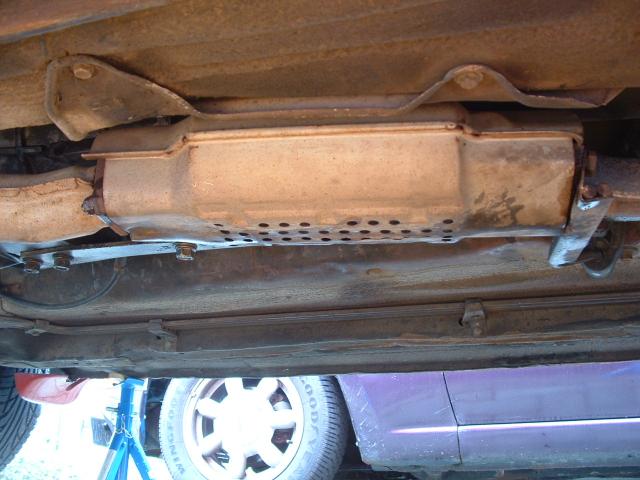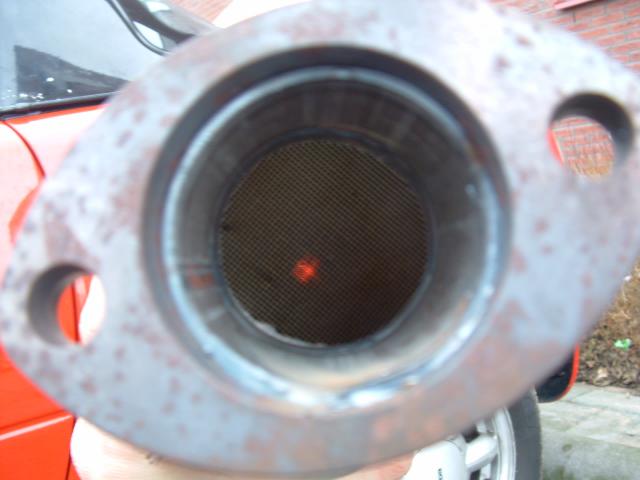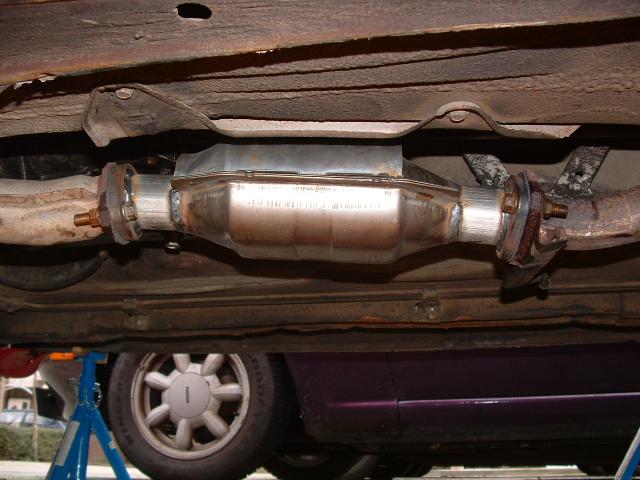Why?
What is a catalyst?
A catalyst is an element in the exhaust of a car. It filters the exhaust gases. The catalyst (usually seen as a bulge in the exhaust pipe) contains a ceramic element that is provided with the elements that are required for filtering the exhaust gases. The (mostly) ceramic element has a layer of platinum, rhodium, palladium or a combination of these. This neutralizes the three most harmful components (carbon monoxide (CO), hydrocarbon (CH) and nitrogen oxide (NOX)) in the exhaust gases.
In order to work properly, the temperature of the "cat" must be at least 240 degrees Celsius (460F). The air / fuel ratio (lambda value) must be between 0.97-1.03. The catalyst must have a good flow and must not be contaminated.
The carbon monoxide (CO) is converted into the harmless carbon dioxide (CO2) with the help of oxygen and water (H2O).
Hydrocarbons (CH) are also converted (burned) to carbon dioxide (CO2) and water (H2O). Most important is the conversion of nitrogen oxide (NO) to nitrogen (N2) and carbonic acid (CO2) in formula: NO + CO> 1 / 2N2 + CO2. This shows that quite some CO is needed to achieve this. The air / fuel mixture must therefore not be too lean.
If lambda control is used with a gasoline engine, the catalyst can achieve an efficiency of 85% to 97%. If there is no lambda sensor, or it does not work, a return of around 50-55% can be achieved. The working temperature of the cat is already reached (with a outside temperature of 20°C) after about 90 minutes. The cat really starts to do its job at 240°C. Because the fuel mixture is somewhat richer (for the CO) and because of the higher back pressure, a car with a cat consumes slightly more fuel.
Long-term full-throttle or heavy loads should be avoided with a cat. The service life decreases more strongly the more often the catalyst temperature rises above 800 ° C. Especially driving with a trailer in mountainous regions with a high outside temperature is a killer for the cat.
In Europe, manufacturers are striving to give the catalyst a lifespan of 120,000 to 160,000 km. This is under good conditions and with an average driving style. In America, according to EPA requirements, a catalyst must be at at least 80% after 50,000 miles of use. The bottom line is that for about 80,000 to 100,000 km a catalyst will do its work properly.
The difference between a European and an American catalyst is the installation location. Because Europeans tend to drive a bit faster and more agressive, the catalyst is often placed more to the rear. This is to prevent a too high working temperature.
To determine whether the cat is still doing its job, the exhaust gases are measured annually at the MOT. The 4-gas test. A simple and quick test can be done through temperature measurement. The temperature at the catalyst inlet must be lower than at the outlet. A catalyst that works (reacts) produces heat. The difference must be at least 20°C. With a catalyst that does not work, the outgoing temperature will be lower than the input.
The lambda sensor. Sits in front of the catalytic converter, and in engines with a three-way controlled cat also one after. This measures the oxygen content in the exhaust gases. With this data the computer can adjust the injection and the ignition to work as efficiently as possible. It is recommended to replace the lambda sensor every 50,000 km (30.000mi). A defective lambda sensor can cause the catalyst to break. The car will often also use more fuel. Good spark plugs and wires are also important. If the fuel mixture does not ignite properly, unburned fuel will enter the catalyst. The temperature can then rise so high that the catalyst melts.
source: http://www.redexx.com
replacing the catalyst:
My car did not pass the MOT: CO value too high due to a broken catalytic converter. In recent years it was always easy, but it now it seemed my luck had run out. I checked the internet and bought a cat off Ebay. All complete with the flanges already attached and even the gaskets were included. So far so good. After only two weeks a parcel arrived:

Replacing the catalytic converter on an MX-5-'94 is a simple task that you can easily do yourself. Make sure you have a stable surface and a good set of axle supports.

First a look under the car at the old cat:

It is secured with four bolts and / or nuts. I have already marked the cat while it is still on the car, so there will be no doubt how the new one should fit. Spray the bolts and nuts with penetrating oil as much as possible and let them soak in. Then you can undo them and take the cat off:

a large hole in the exhaust:

And then it became obvious as to why the old cat performed so poorly:

The ceramic element is completely missing.

The new cat looks fine:

New and old side by side. Note my markings about front (Voor) and rear (Achter):

Got myself a matching set nuts and bolts. and some copper grease:

Everything ready for fitting under the car:

And fitted:

Beautiful isn't it? Too bad you can't see anything of it from the top...
One footnote: ofcourse this is a dream installation. I never expected the rusted nuts and bolts to come off this easily.
If you are about to attempt this for yourself note that things can be rusted solid. so keep penetrating oil, good tools and an angle grinder nearby. Also make sure you have new nuts and bolts, so you don't have to re-use the old rusted ones.








